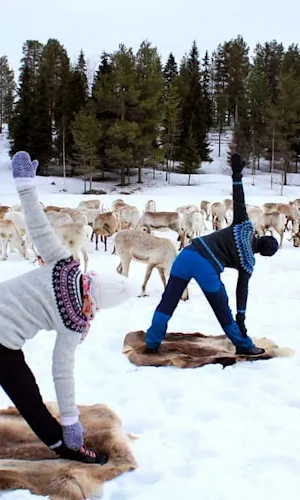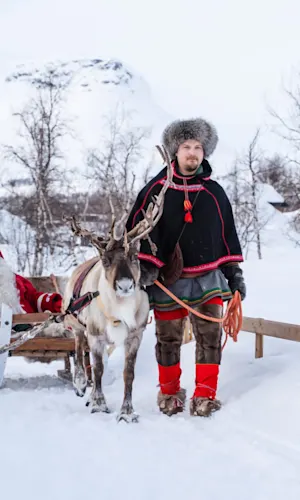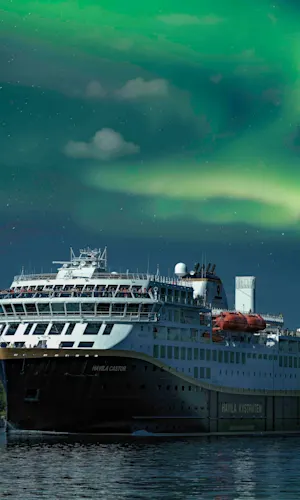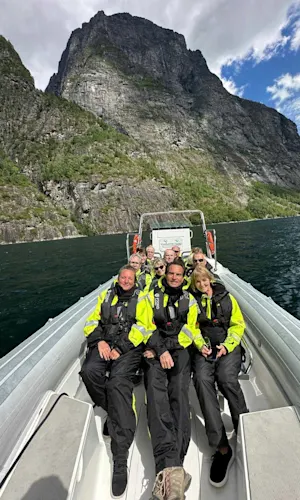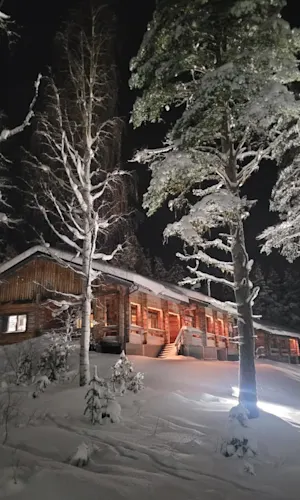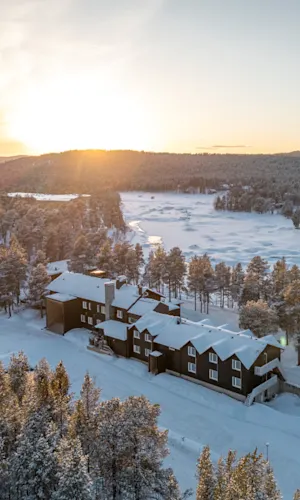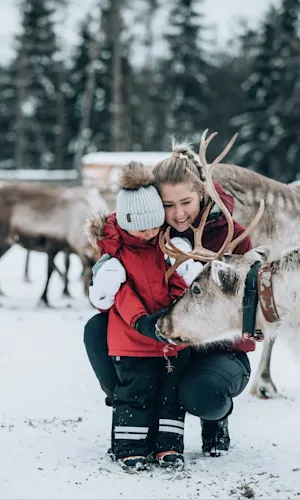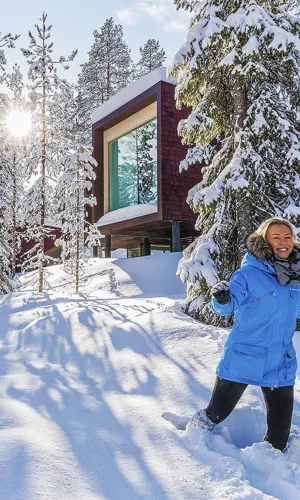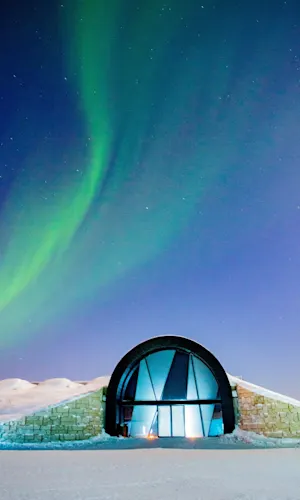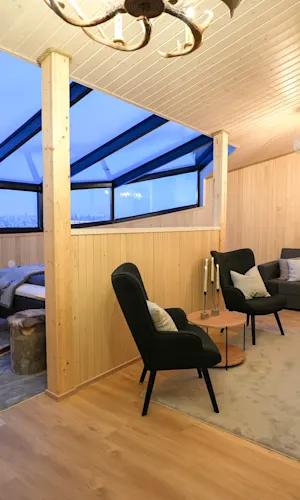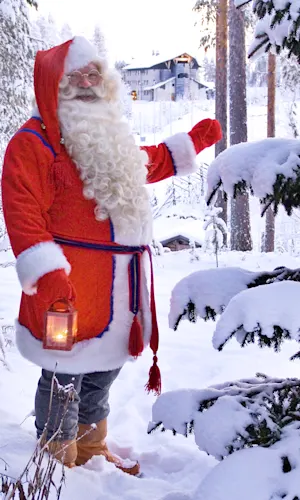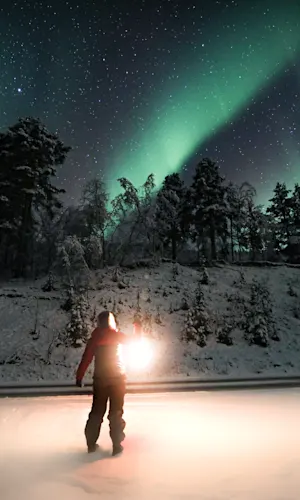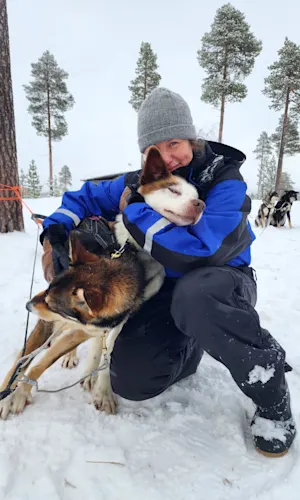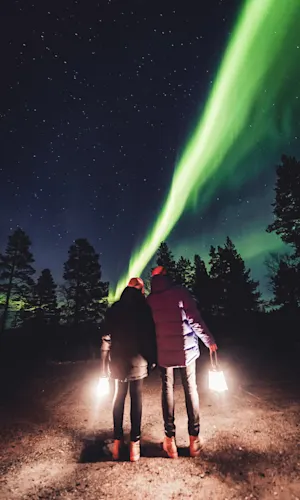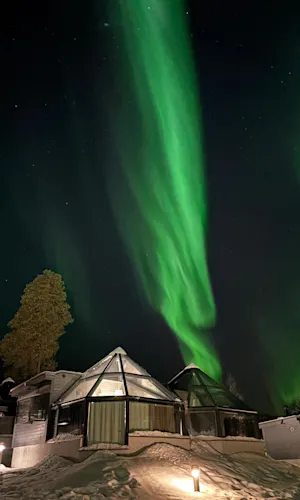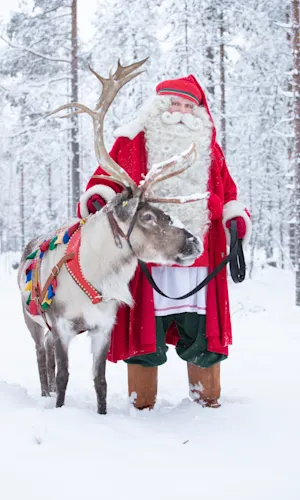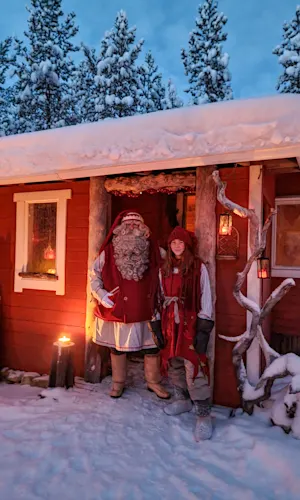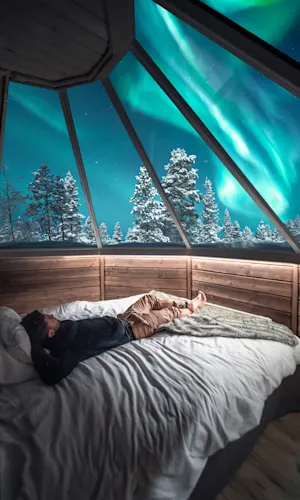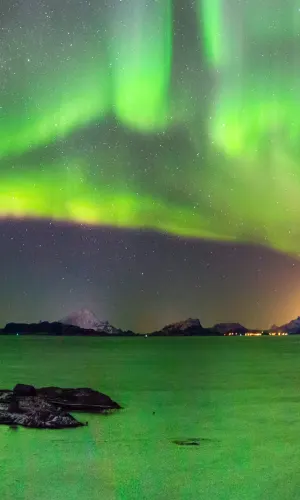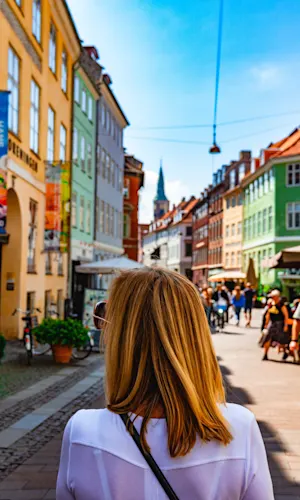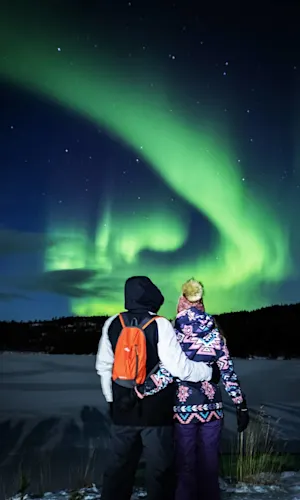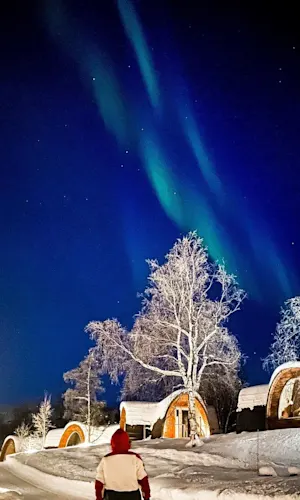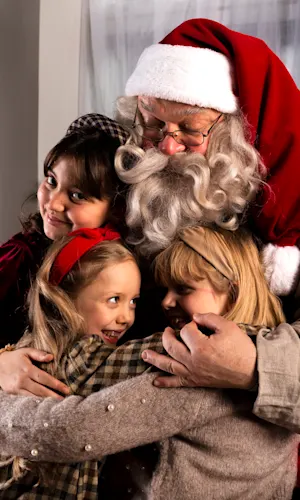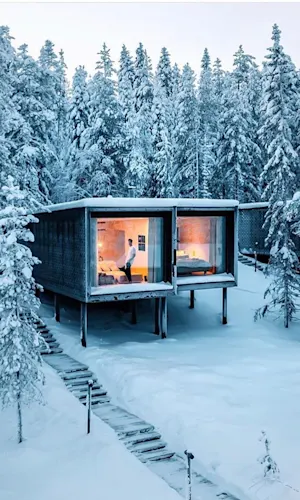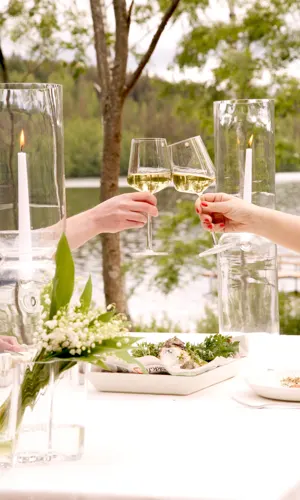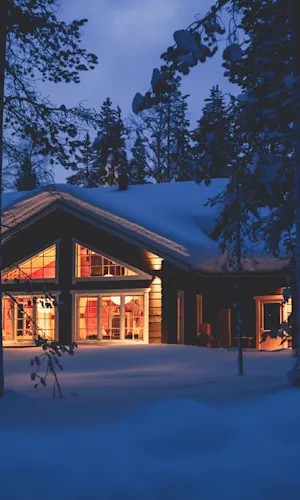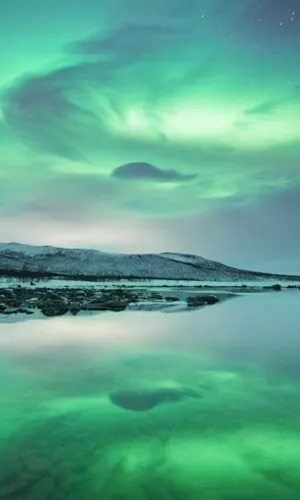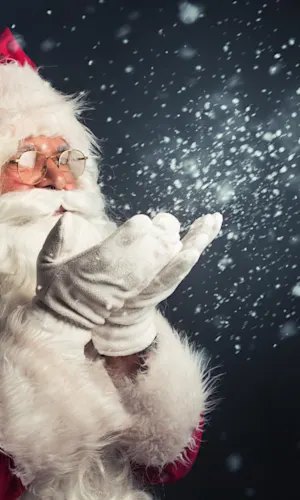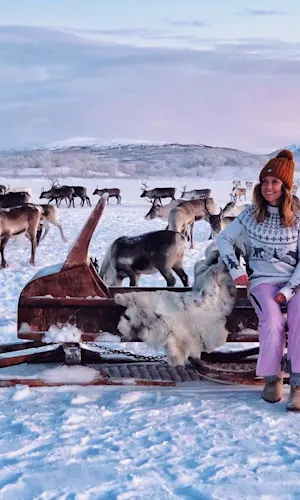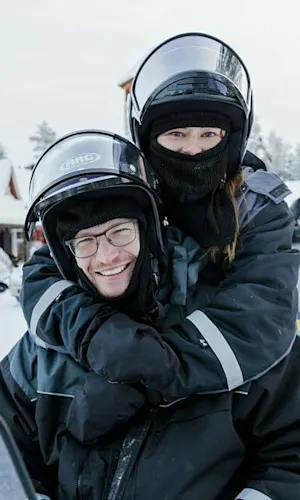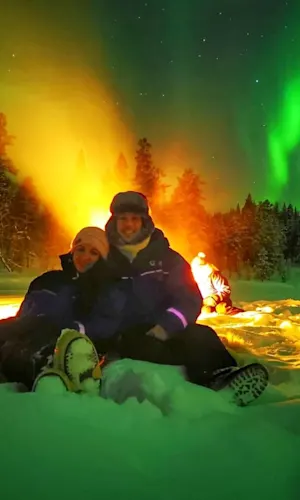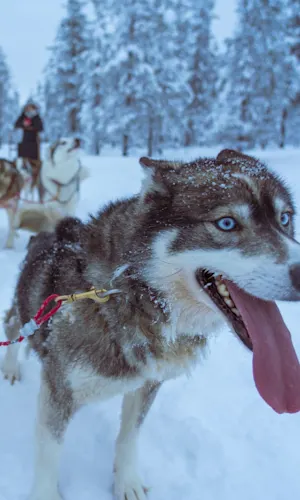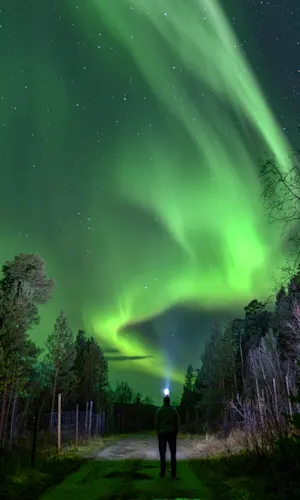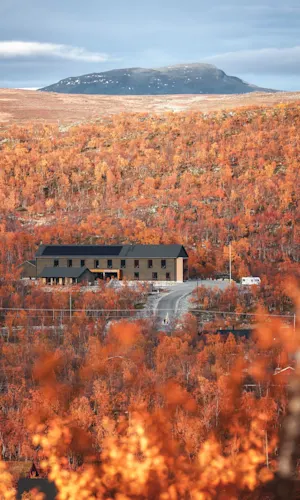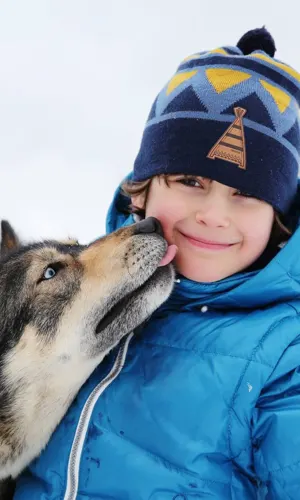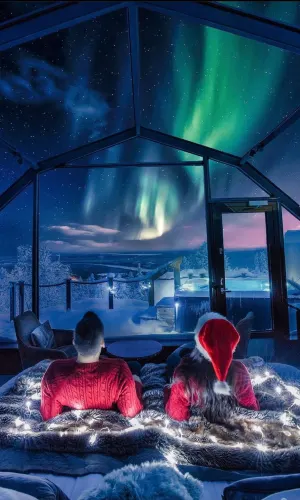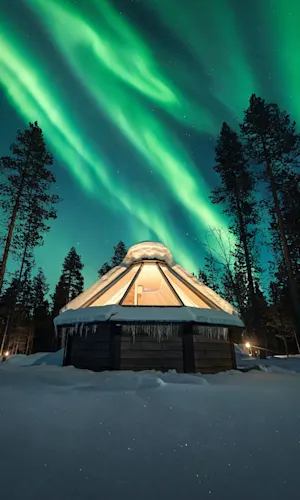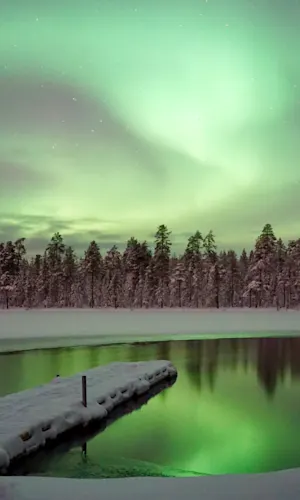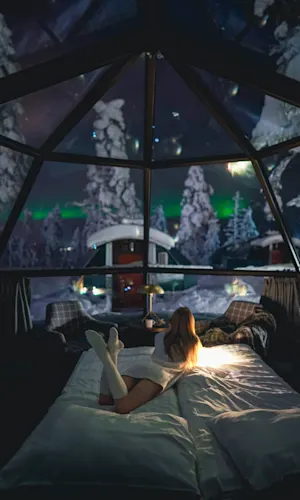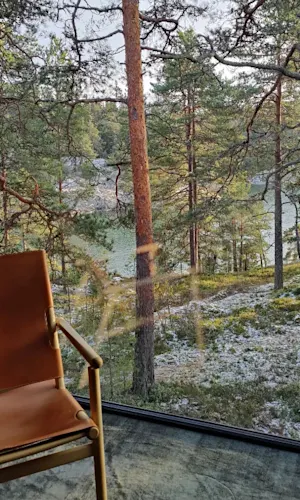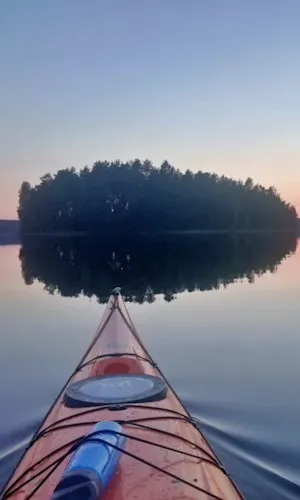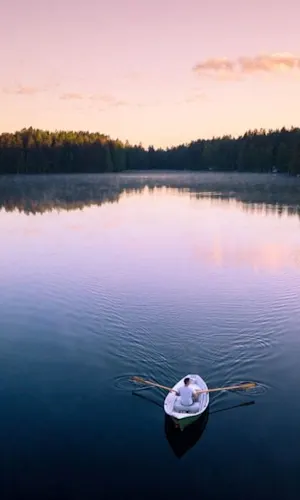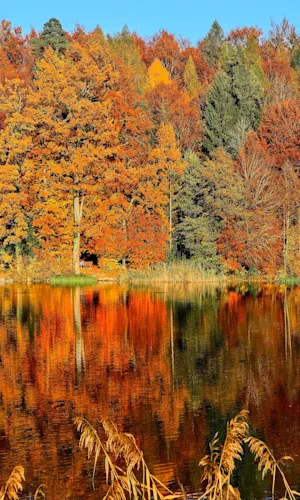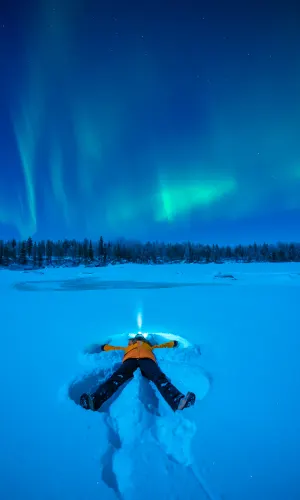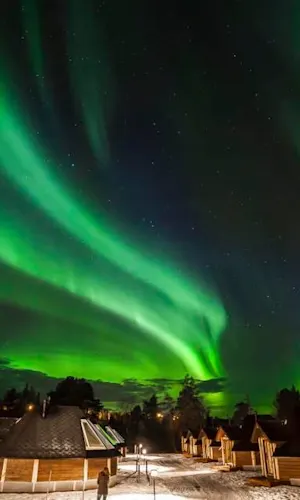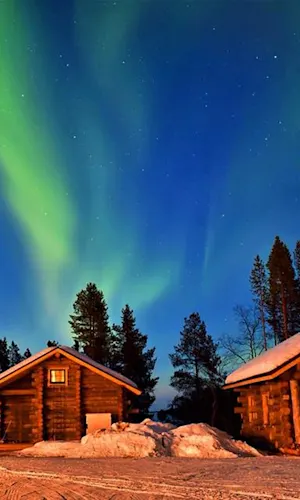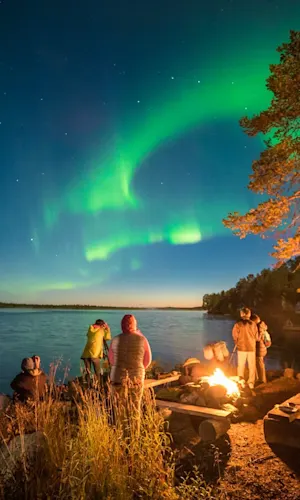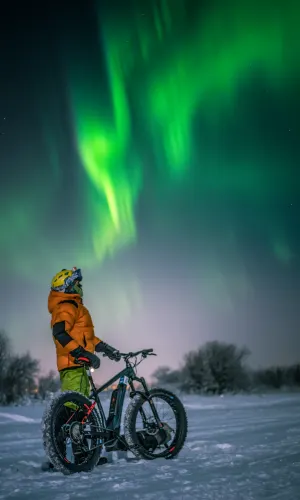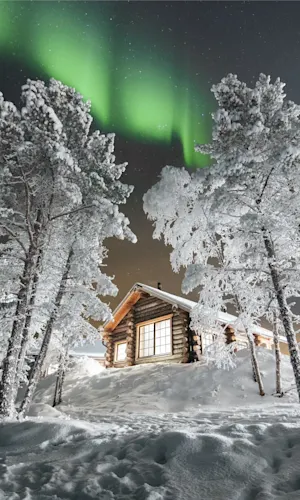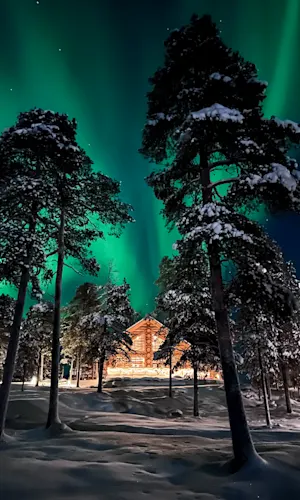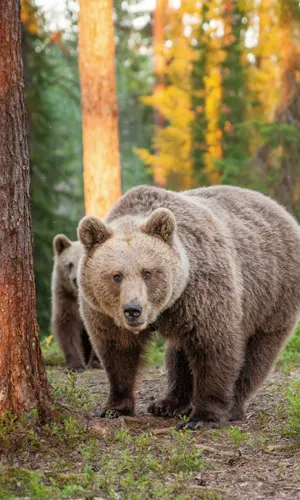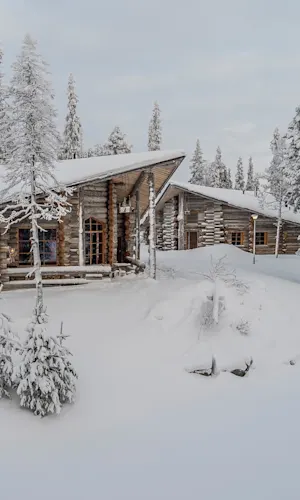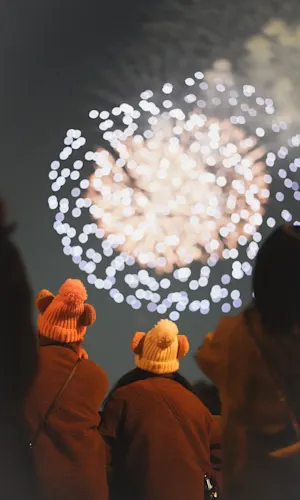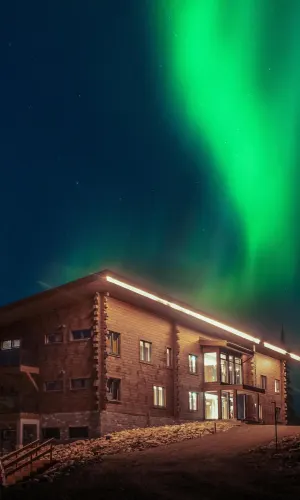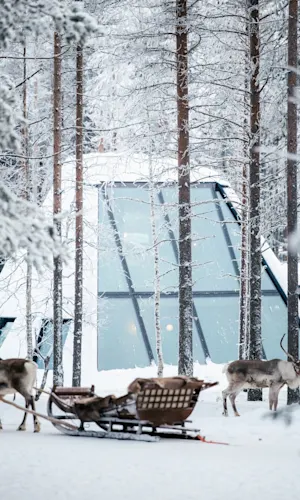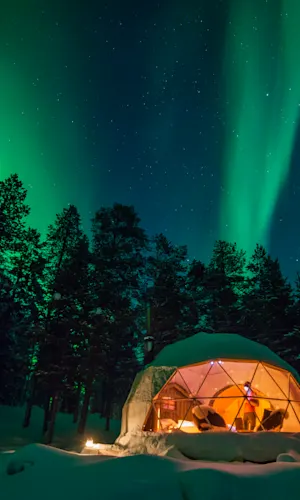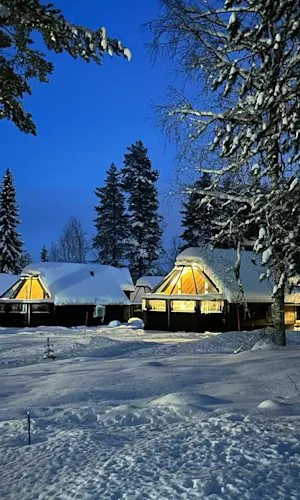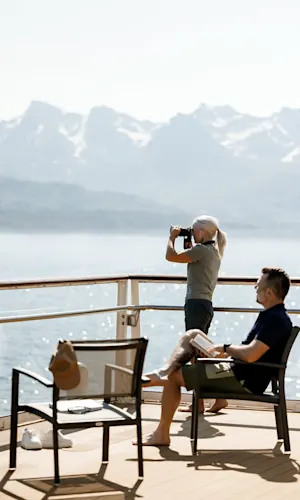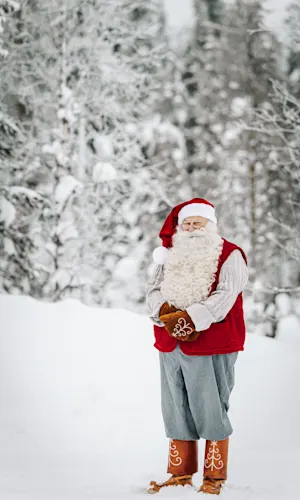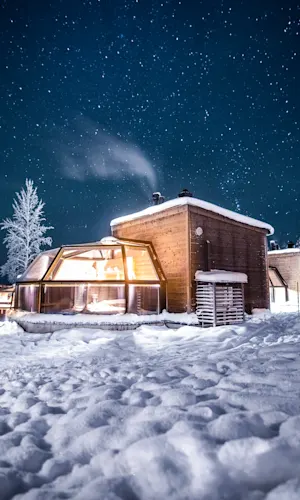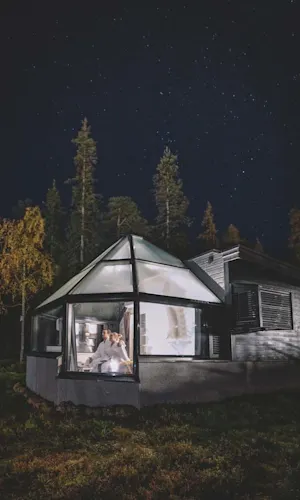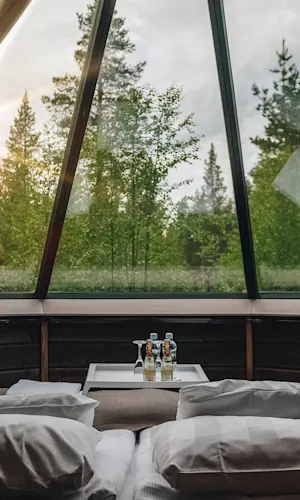Finland
Welcome to the enchanting world of Finland, a land that seamlessly blends untamed wilderness with modern marvels, offering a symphony of experiences that captivate the soul. Explore a landscape adorned with thousands of lakes, each reflecting the purity and tranquillity that define this Nordic gem. If you are lucky, you will witness the dancing Northern Lights (Aurora Borealis) illuminate the night sky, turning it into a canvas of colours that weave a tale of pure magic.
Discover the whimsical charm of Finland's fascinating ice hotels and igloos, where bold design meets the serenity of beautiful forests. Traverse through the snow-kissed landscapes and encounter the gentle reindeers that roam freely. Embrace the cultural ritual of saunas, where the Finnish tradition of relaxation and well-being takes centre stage.
In the summer, experience the captivating phenomenon of the midnight sun, where the sun graces the horizon even in the darkest hours, casting a warm and golden glow over the landscape.
Finland beckons as a haven of relaxation, wellness, and happiness. The pure and clean surroundings amplify the sense of well-being, making it an ideal destination for those seeking a retreat from the hustle and bustle of daily life.
A visit to Finland isn't complete without venturing into Finnish Lapland, the revered home of the real Santa Claus. The ultimate fairy-tale moment awaits as you receive a personal present from Santa Claus himself, turning this encounter into a cherished memory not to be missed.
Experience the magic of Finland, where every moment is a celebration of its unique blend of tradition, modernity, and the pure joy of being surrounded by nature's wonders.
With more the 50 Finland tours listed, we are sure you will find something that excites you below.
Style
Season
Duration
Tour Standard
HIGHLIGHTS OF OUR FINLAND TOURS INCLUDE:
Finland has some of the most beautiful natural scenery and untouched wilderness in Europe. It is no secret that Finland is a magical winter destination with our Lapland Arctic highlights tour and Lapland Christmas Magic escorted tour amongst many options for Finland tours in wintertime.
But with thousands of lakes and beautiful forests summer in Finland should not be dismissed. Have you ever found yourself saying "if only there were more hours in the day?" In Finland your wish will come true. Just as Finland experiences no sun in winter months, the opposite is true in summer.
With 24 hours of daylight in the north and only 'twilight' in the south you literally have more hours to explore Finland and its beautiful forests and thousands of lakes where you can enjoy canoeing, fishing, camping and sauna. For an authentic short escape, our Endless summer days by Lake Saimaa tour will have you experience the tranquillity of Finnish lakes.
Northern Lights/Aurora Borealis in Scandinavia are at their most frequent between end of September and end of March. A range of our Finland and Scandinavian tours have been made to maximise your chances of viewing this remarkable phenomenon. Autumn colours & Aurora Borealis is an example of a wonderful Finnish Autumn tour, but to maximise your experience, all our Northern Lights tours are away from the cities to avoid artificial light pollution.
In winter Finland transforms into a fairytale landscape of whites and ice and is the best time of the year to travel to northern Finland and Lapland. Most of the traditional Lappish activities involve snow, so we would recommend you travel between December and April.
Be sure not to miss Northern Lights/Aurora Borealis tours, snowmobile driving, husky ride, reindeer sleigh rides, snowshoeing and visiting the real Santa Claus which are all activities offered in most of our Finland tours.
OUR FINLAND TOURS CAN INCLUDE:
Our Finland travel options are endless and depending on what you want to experience we have a Finland tour suitable for any age and interest.
For a true taste of what Finland has to offer in summer, why not take our independent self-drive Green Forests & Blue Lakes in Finland tour package. This tour to the eastern parts of Finland is like taking a trip into the heart of Finnish identity. You will enjoy relaxing green forests, rolling hills and glittering lakes.
If you don't fancy sub-zero temperatures associated with Finland in winter, consider an Autumn tour. During this Lapland Autumn Tour you can stay in an Aurora Dome whilst experiencing peaceful afternoons at the lake and Northern Light activities.
If you want to try winter activities such as snowshoeing, snowmobile rides, husky safari or reindeer rides - Finland is the place to be. There is almost always snow in Northern and Eastern Finland between December and March and you would not want to miss these experiences on a tour often in combination with seeing Northern Lights/ Aurora Borealis.
To meet and hug the real Santa Claus in Finland is often a once in a lifetime experience. During our Polar Bears & Santa in Lapland tour families get to meet Santa in his very secret hideout and learn about everything Christmas. All our Christmas tours include a range of winter activities, and if you can't find a Christmas in Finland tour to suit, we can tailor make an itinerary for you.
Many of our Finland Christmas holidays run on specific dates, however we also offer pre-Christmas packages such as Pre-Christmas at Aurora Village, New Year packages such as New Year's Eve in Lapland tour as well as tours starting in January.
Of course, a trip to Finland is not complete without visiting the vibrant capital Helsinki. This hotspot for design and architecture is not to be missed. You can take a break in a sauna, taste the Finnish cuisine, visit Nuuksio National park or simply take a stroll in Helsinki's design district.














